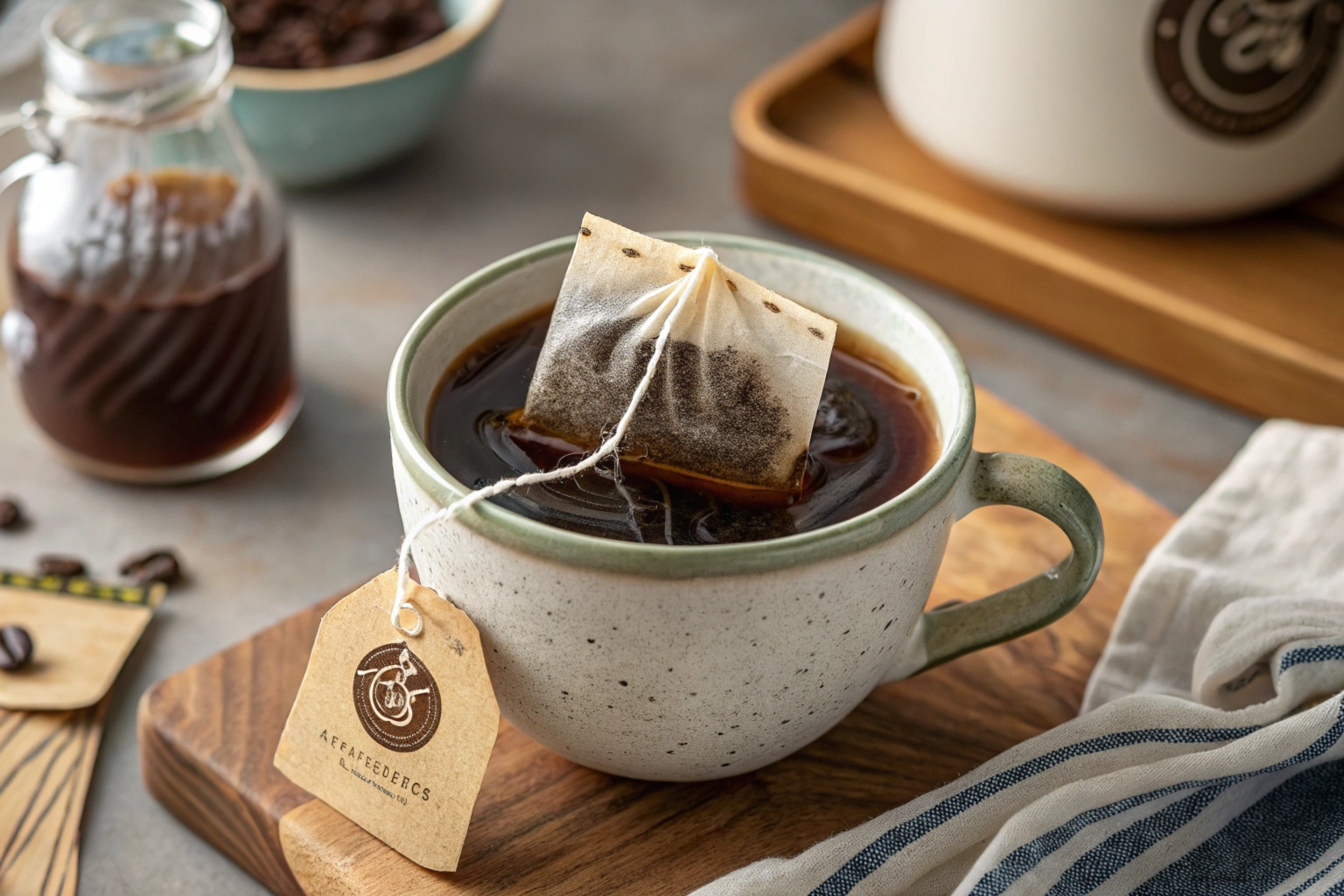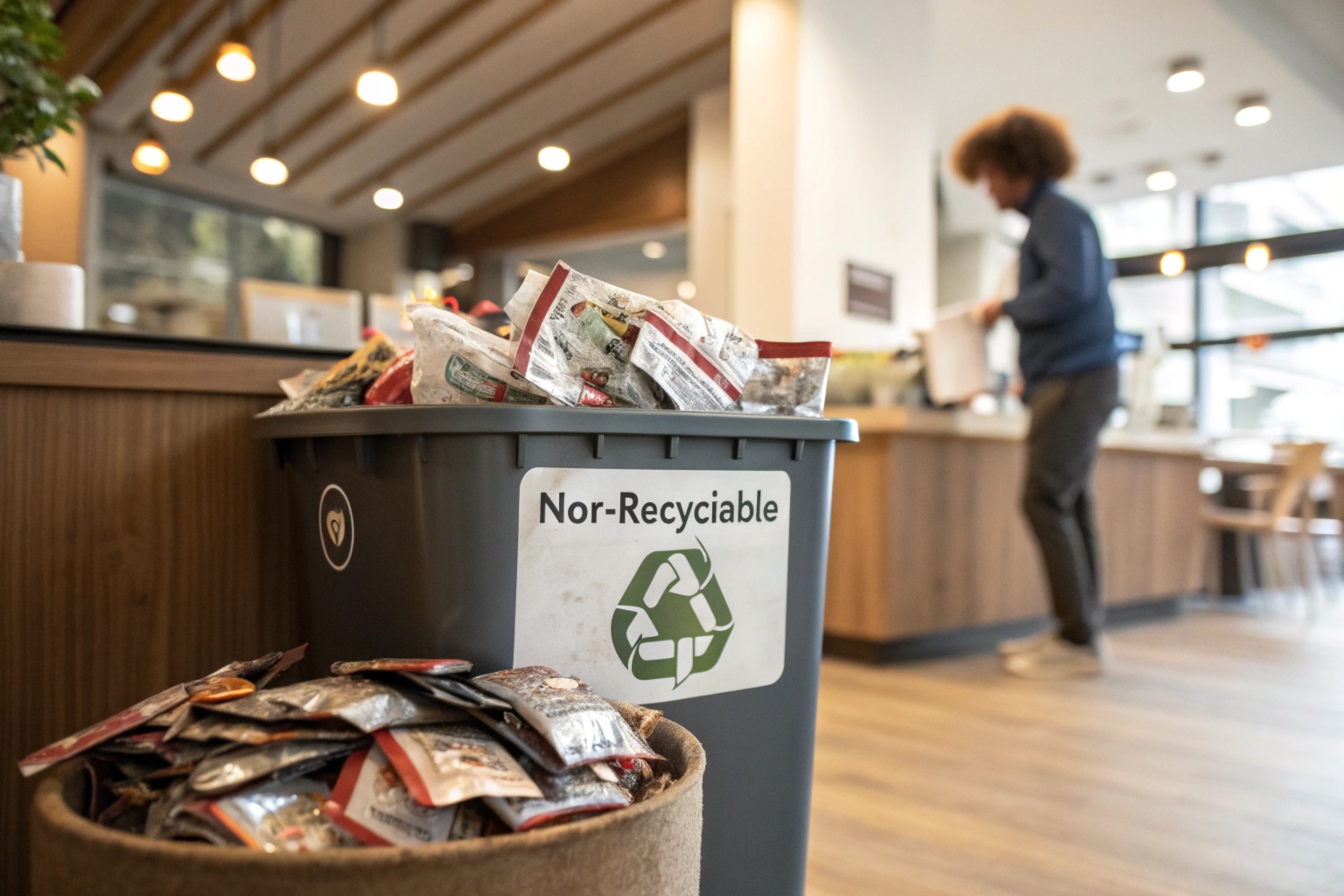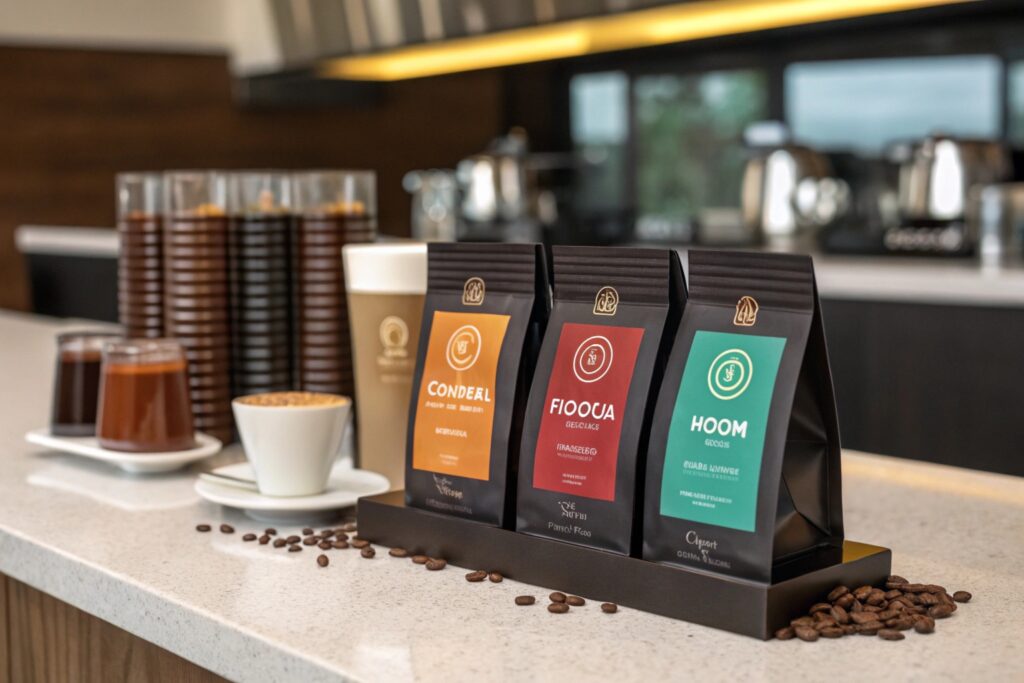Coffee is beloved worldwide, yet its form of consumption rarely mimics tea. Why aren’t coffee sachets as common as tea bags? Let’s explore the reasons behind this.
Coffee isn't commonly sold in sachets because of its brewing complexities and the demand for fresh flavors.
Understanding the challenges behind packaging coffee like tea helps us see why it hasn't become the norm. But could it change in the future?
What are coffee tea bags, and why are they not widespread?
Coffee tea bags, often referred to as coffee sachets, are similar to tea bags but filled with ground coffee instead of tea leaves. They allow consumers to steep coffee like tea for convenience. Despite their practicality, they’re uncommon in the market.
Coffee tea bags are not widespread due to taste limitations and preparation difficulties. Learn more about coffee sachets1

Dive Deeper: Brewing Challenges for Coffee Tea Bags
To understand why coffee tea bags are less common, we need to compare brewing tea and coffee. Tea releases its flavors quickly, but coffee requires precise temperature and time control. Without these, coffee tastes either weak or over-extracted.
Flavor Extraction Differences
| Beverage | Ideal Temperature | Typical Steeping Time | Flavor Sensitivity |
|---|---|---|---|
| Tea | 70-85°C (158-185°F) | 2-5 minutes | Moderate |
| Coffee | 90-96°C (194-205°F) | 4-5 minutes | High |
Ground coffee releases oils and soluble compounds slowly. In sachets, achieving the same quality as drip coffee or French press is difficult. Discover the science of coffee extraction2
Material Constraints
Tea bags often use lightweight, porous materials that suit tea leaves. Coffee's density and grind size require thicker bags, which sometimes hinder brewing. These limitations mean the taste of coffee sachets often falls short of consumer expectations. Explore material innovations for coffee packaging3
Consumer Preferences
Many coffee enthusiasts prioritize flavor and freshness. Coffee sachets, though convenient, rarely offer the bold taste of freshly brewed coffee. This has kept demand low among discerning drinkers.
Could innovations make coffee tea bags more viable?
Recent advancements in packaging and brewing technology might help coffee sachets gain popularity. Manufacturers are exploring methods to overcome taste and brewing limitations.
Innovations like pre-measured doses and improved bag designs could boost the appeal of coffee tea bags. Read about advancements in coffee technology4
Dive Deeper: Emerging Solutions for Coffee Tea Bags
Pre-Measured Freshness
Some companies now vacuum-seal single servings of ground coffee in sachets. This reduces exposure to air and preserves flavor. With controlled portions, it’s easier for consumers to achieve a consistent brew.
Advanced Filter Materials
Engineers are designing coffee sachets with specialized filters that enhance extraction. These materials balance the need for strength while ensuring optimal flow of water through the coffee grounds.
New Brewing Techniques
Companies are experimenting with hybrid approaches, such as steepable coffee bags paired with micro-grinders. These enable drinkers to enjoy fresh coffee without sacrificing convenience. Find out how hybrid brewing works5
Challenges That Remain
While innovations show promise, barriers like cost and consumer acceptance remain. High-quality coffee sachets are more expensive than traditional methods, which might limit their appeal to price-sensitive buyers.
How does sustainability impact the adoption of coffee sachets?
The environmental footprint of coffee sachets is another factor in their limited popularity. Many tea bags are compostable, but coffee sachets often require additional materials that complicate recycling.
Coffee sachets struggle with sustainability due to their complex material composition. Learn about sustainable coffee packaging6

Dive Deeper: Eco-Friendly Solutions for Coffee Packaging
Comparing Materials
Traditional coffee sachets use multiple layers: one for flavor preservation and another for brewing. These layers often include plastic, making disposal less eco-friendly.
Innovations in Compostable Bags
Some companies have developed biodegradable coffee sachets. These use plant-based materials that break down naturally, offering a more sustainable solution. Discover compostable coffee sachets7
Consumer Preferences and Awareness
Environmental concerns influence purchasing decisions. If brands emphasize sustainable materials and educate consumers, they could drive adoption of eco-friendly coffee sachets.
| Sustainability Feature | Impact on Market Adoption |
|---|---|
| Biodegradable Materials | Increased appeal |
| Minimal Packaging | Lower costs |
| Transparent Sourcing | Builds trust |
Are there cultural factors influencing coffee sachet adoption?
Cultural habits and expectations also shape the popularity of coffee sachets. In many regions, brewing coffee is an essential ritual, and sachets may not fit these traditions.
Cultural preferences for traditional brewing methods limit the adoption of coffee sachets. Understand coffee traditions globally8
Dive Deeper: Coffee Traditions Around the World
Rituals of Coffee Preparation
In countries like Italy and Turkey, coffee brewing is an art form. Italians value the espresso, while Turkish coffee involves finely ground beans boiled in a cezve. Both cultures prioritize techniques that sachets cannot replicate.
Instant Coffee vs. Sachets
In markets like Asia, where convenience often drives coffee consumption, instant coffee is more established. It offers speed and affordability, making it a tough competitor for coffee sachets.
Branding and Perception
Coffee sachets may struggle with image issues. High-end brands often focus on beans and artisanal preparation, which contrasts with the mass-market appeal of sachets.
Conclusion
Coffee sachets offer undeniable convenience, but challenges in brewing quality, sustainability, and cultural acceptance have hindered their widespread adoption. Innovations may bridge the gap, but for now, traditional methods remain the preferred choice for coffee lovers.
-
Introduces coffee sachets to readers and explains their lack of popularity. ↩
-
Explains the brewing requirements of coffee, which are harder to achieve with sachets. ↩
-
Explores potential packaging materials that could improve the functionality of coffee sachets. ↩
-
Highlights advancements that could make coffee sachets more viable. ↩
-
Provides insights into how hybrid brewing systems can enhance sachet quality. ↩
-
Discusses how sustainability affects coffee sachets and explores eco-friendly alternatives. ↩
-
Focuses on compostable and biodegradable sachet options for environmentally conscious readers. ↩
-
Offers a cultural perspective on why sachets are less popular in traditional coffee markets. ↩


